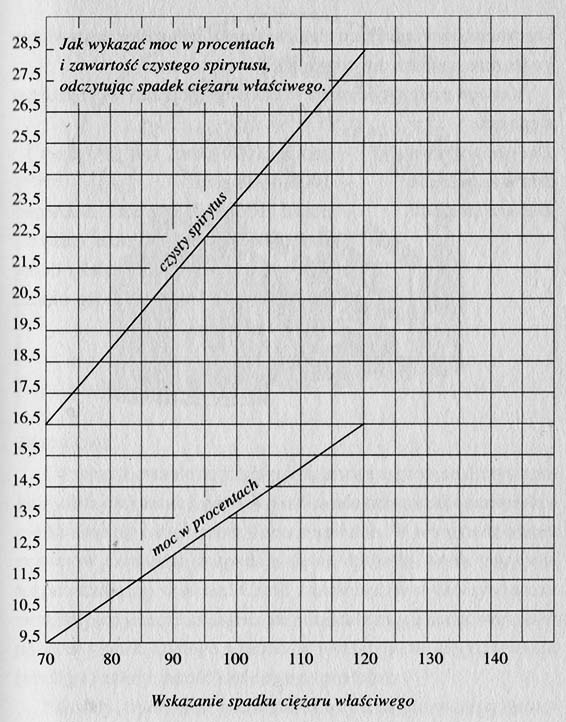 I realize, that most novice winemakers are not interested in accurate measurement of alcohol content. But there are such, who strive to obtain a drink of perfect quality and it is to them that I dedicate this article.
I realize, that most novice winemakers are not interested in accurate measurement of alcohol content. But there are such, who strive to obtain a drink of perfect quality and it is to them that I dedicate this article.
Alcoholometer (hydrometer) is very simple to use. Used to measure fluid density, determining the sweetness of the drink and - if we use it at the beginning and at the end of fermentation – the alcoholic strength of the wine. It is a glass tube terminated at the bottom with a bubble. On the tube is marked the scale from 990 into 1170. These numbers indicate the specific gravity (density) fluid. If we put the hydrometer in a measuring cup filled with water, the scale will show the number 1000 corresponding to the specific gravity of water. If we add alcohol to the water, the graduation shows that the liquid is less dense, and when we add sugar – for a bigger one (by the amount of sugar added). Therefore, by measuring the must just before fermentation, we will get an indication of the total sugar content – both natural (from fruit), and the added one.
For accurate measurement, fluid temperature should be 15.5 ° C. After placing the alcohol meter in the liquid, it should be rotated, to get rid of air particles, which could settle on its surface. We also measure at the end of fermentation. Subtract the number from the second measurement from the number from the first measurement. The difference is an indication of the decrease in the specific gravity of the drink. Divide the result of the subtraction by 7,36, to get the number that determines the strength of the wine (in percents). Then we multiply the obtained number by 7, and divide the product by 4, obtaining the degree of pure alcohol content in the wine. Let's follow this example:
First reading 1086
Last reading 998
Decrease 88
88 : 7,36 = 11,96%
(11,96% x 7): 4 = 20,93 pure spirit
Thanks to the ability to determine the alcohol content of wine, various types of wine can be produced without difficulty – from tableware to dessert and aperitifs. We will get certainty, that each of them contains the right amount of sugar.
Some recipes sometimes recommend that you add only part of the sugar during fermentation. Of course, in these cases, the first hydrometer reading will not show the total sugar content. This problem is easily solved: we take the first measurement before adding sugar, and the next – immediately after adding it, then we add up both results.
Wine producers do not always indicate the content of pure spirit on the label, and if even, these values can vary widely. The percentages of the different types of wine are as follows:
Table wine – 10-12,5%, except for Sauternes, whose power it can reach 14%; German and rosé wines are usually the weakest.
Aperitifs – 12,5-16%, depending on the species.
Dessert wines – 16% and more.
How to demonstrate potency in percent and content of pure spirit, reading the specific gravity drop.

However, in any case, the wine should work until all the sugar is consumed and aged until the desired result is obtained.. Dry wines ripen better than sweet wines, especially in the gadfly. When the wine reaches maturity, before adding sugar, we can dissolve a stabilizing tablet in it (available in wine shops). It will prevent the wine from re-fermenting and spoiling. Before pouring the drink into the bottles, leave it in the ridge for a few more days.
Final specific gravity readings should be as follows:
For dry wines – below 1000 g/cm3, (ok. 990 g/cm3)
For medium wines – 1000-1008 g/cm3
For sweet wines - more than that 1008-1018 g/cm3; Sauternes may even have 1030 g/cm3 (with such a high sugar content, a little acid should be added, because the wine may turn out to be too sweet).